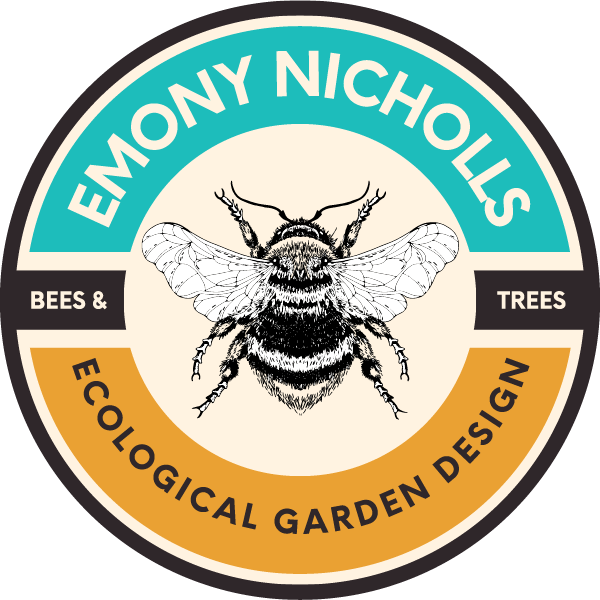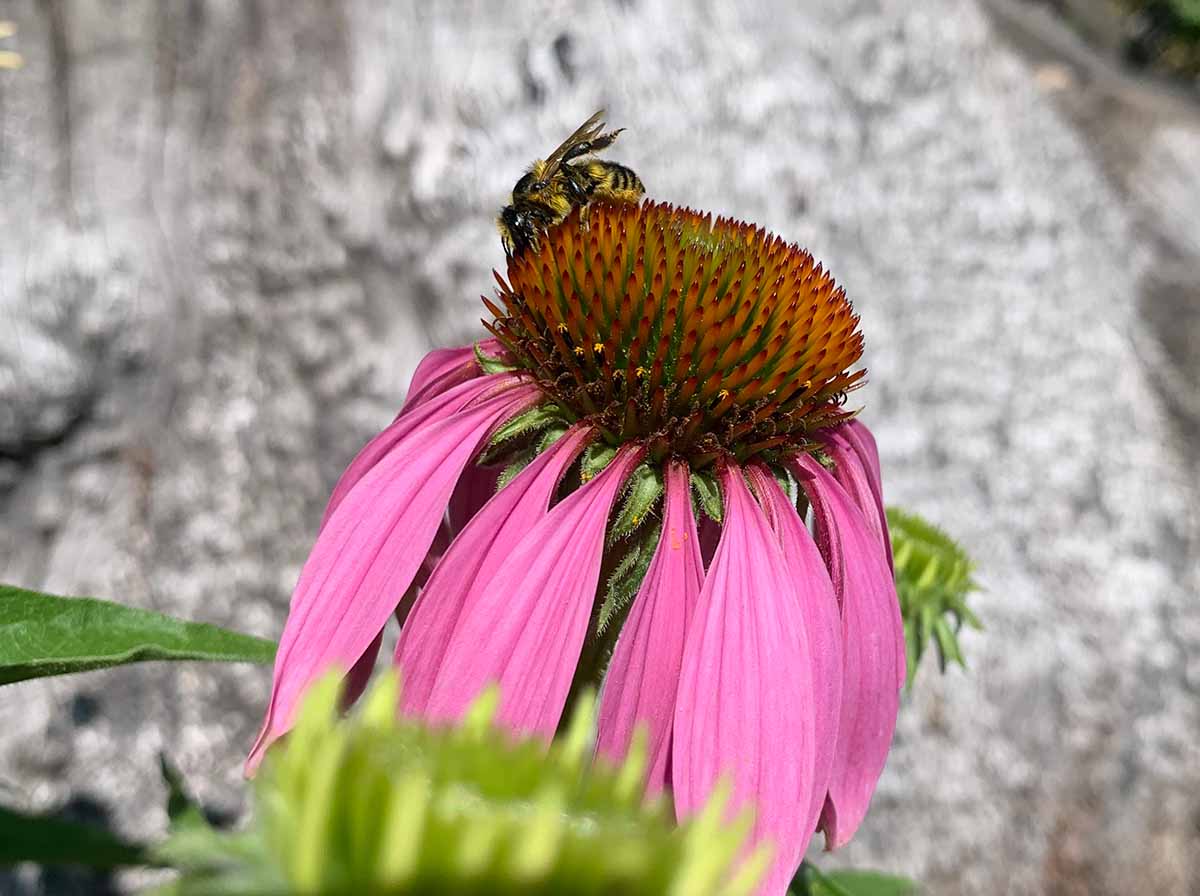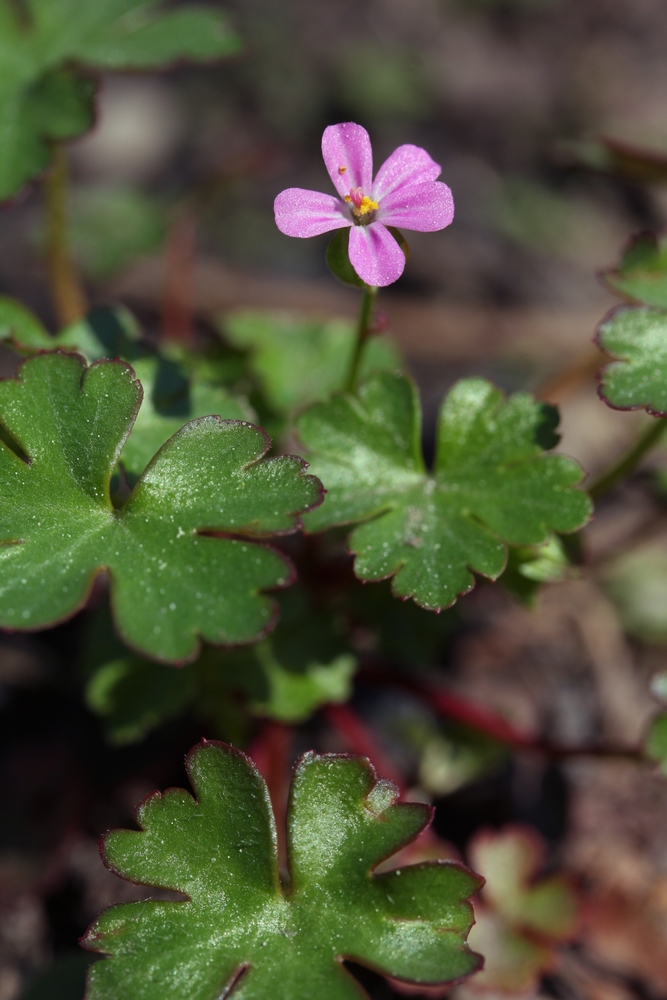Hello and welcome to the first blog. I am really looking forward to covering a wide range topics on anything related to ecological gardening. With so much to say, let’s get to it!
When most people think of bees, they picture honey bees, the insects who visit flowers and make honey. But did you know that there are hundreds of other types of bees? Native bees are those who lived here in North America before the introduction of the European honey bee. Bees can range in size from millimeters to a couple inches and be found in most ecosystems worldwide.
Check out this table I made to show some of the main differences between these two important kinds of bees.
Social Behaviour
Honey Bees
Honey bees build communal hives with all members working together. Their colonies are ruled by a queen who produces all of the eggs.
Native Bees
70% of native bees in North America are solitary. The females build the nest, provide food and lay eggs. Males die shortly after copulation.
Lineage
Honey Bees
Honey Bees were brought over from Europe for their important contributions to a settler’s homestead.
Native Bees
Native bees in North American have evolved with the local indigenous plants for millions of years.
Pollinator Type
Honey Bees
Honey bees are generalist pollinators, meaning they will pollinate most plants. Because of their non-specialized pollinating behaviour, honey bees are crucial to our food system.
Native Bees
Some species of native bees are specialist pollinators and others are generalists. Generalist bees are able to use a variety of plants for their needs. Specialist bees have evolved to use one type of plant for all of their needs (feeding, nesting, etc). Because of this interconnected relationship, for these species if we lose the plant, we lose the bee.
Pollination Location
Honey Bees
Honey bees store pollen on their legs. They are often seen with orange pollen in big balls on the ‘thighs’ of their legs.
Native Bees
Different bees use different parts of their bodies for pollen transportation, such as their abdomen or legs.
Climate
Honey Bees
Honey bees prefer warm weather above 16 degrees Celsius (60 degrees Fahrenheit) before emerging from their hives and working.
Native Bees
Bees native to North America are tolerant of cooler weather (12 degrees Celsius / 54 Fahrenheit) and will even continue to forage in light rain.
Defense Mechanisms
Honey Bees
Honey bees can become defensive and react to a perceived threat with a sting. Stings can be very painful and even dangerous for some individuals.
Native Bees
Most bees are docile and have a tiny sting, or none at all. Native male solitary bees don’t sting and females will only do so if squished. They have no aggressive reactions to humans and will do their best to avoid you.
Honey Production
Honey Bees
Honey, the Sweet Nectar of the Gods! Honey bees are the the only type of bee who produce honey. The bees produce honey as emergency rations for hard winters.
Native Bees
Honey bees are the only variety that produces honey, all other bees do not.
Diseases
Honey Bees
Honey bees are vulnerable to parasitoid mites. Varroa mites cause wing and body deformations and eventual colony collapse. Honey bees are commonly found to have several other diseases such as Foulbrood, Nosema, and Chalkbrood.
Native Bees
Native bees are also susceptible to parasitoid mites. Hairy-fingered mites will consume the bee eggs and pollen provisions. In provided mason bee homes that use paper tubes, parasitic wasps may drill holes through the tubes and lay eggs in the bee larvae; the wasp grubs emerge, killing the larvae and eating the pollen provisions. Houdini flies quickly lay their eggs while the female bee isn’t looking, later the young maggots emerge and eat the bee larvae.
Human Caused Threats
Honey Bees
There is some evidence which suggests that the Neonicitinoid agricultural sprays which honey bees are coming in contact with are affecting their health negatively, making them vulnerable to parasites like the varroa mite.
Native Bees
Native bees are highly dependent on their environment, and populations are dropping primarily due to habitat loss. This is especially true for specialist bees which use a specific host plant to provide their needs. Neonicitinoid agricultural sprays also threaten native bee populations.
Providing Habitats
Honey Bees
You can provide hives to keep honey bees in your own backyard. This helps plants and provides you a harvest of delicious honey every year! Make sure to check regional rules on keeping hives and honey bees.
Native Bees
Mason bee and leafcutter bee houses can be purchased, or even rented (in some areas) to support native bee populations. In turn, the bees will help pollinate the plants in your yard. Harvesting the cocoons and washing the houses each year is an important part of maintaining healthy nesting homes.





Leave a Reply